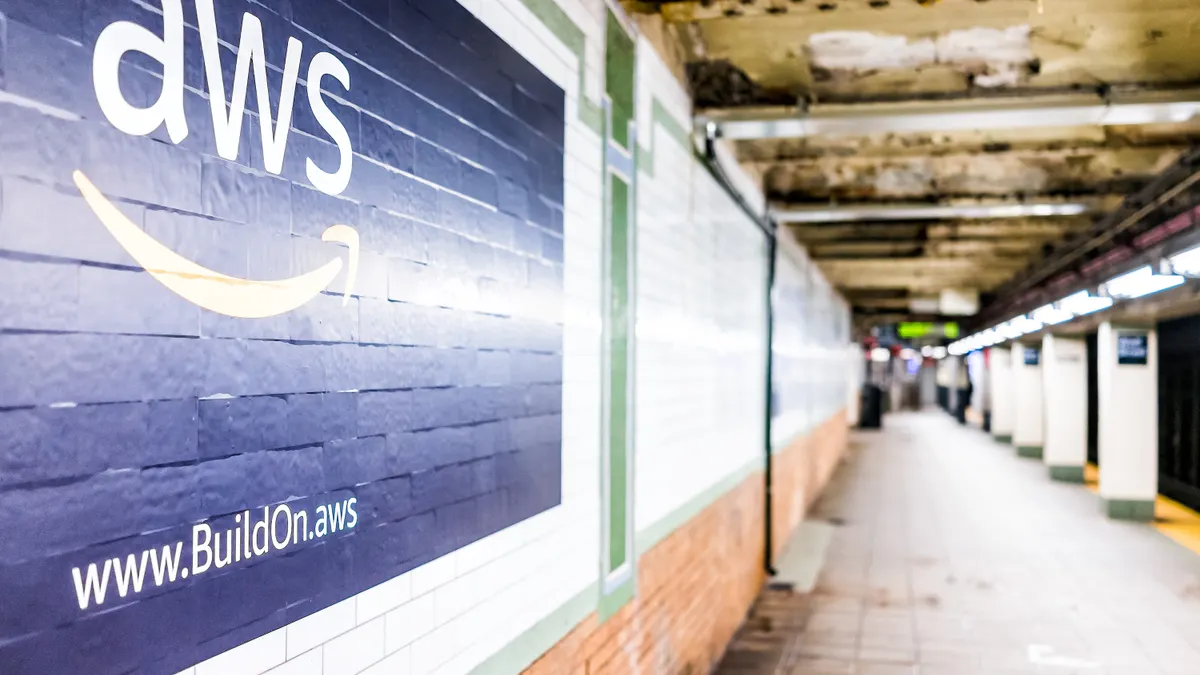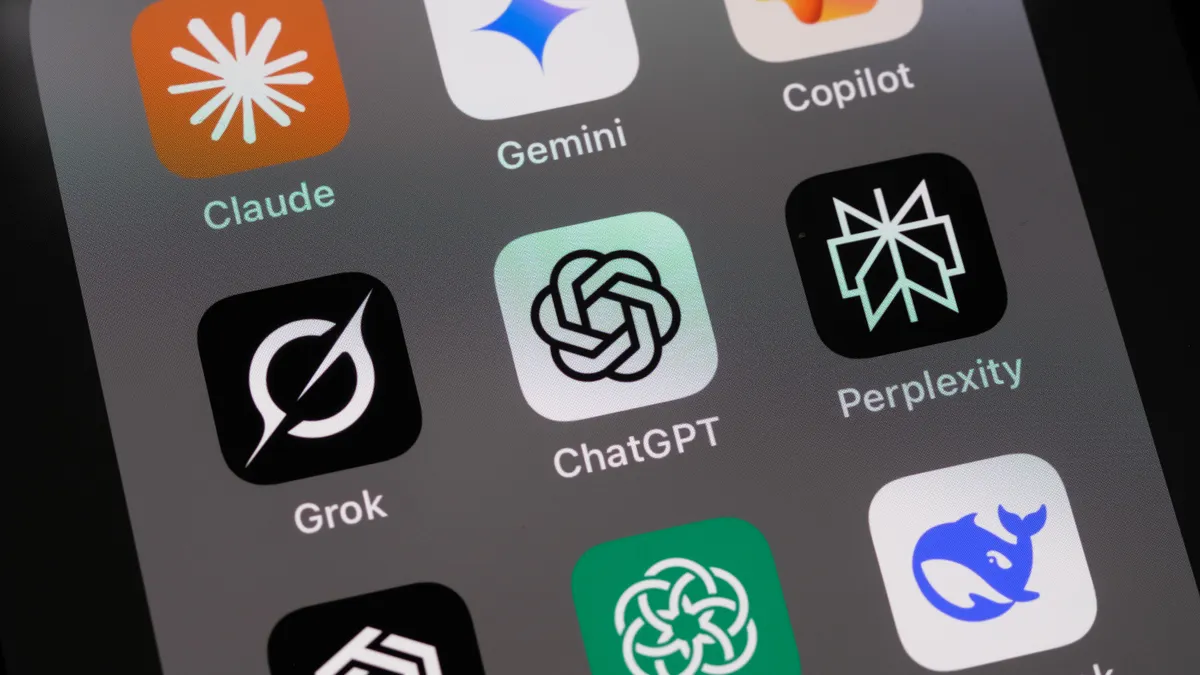Just when we thought 2016 couldn't be topped, 2017 proved us wrong. No one could have predicted this would be the year that they may have paid a ransom for a malware attack disguised as a wiper or that it would be the year net neutrality regulations would change.
The technology industry was pushed to the limits by cyberattacks, the expansion of artificial intelligence (AI) and machine learning (ML) solutions and an administration that is leaning toward greatly changing how companies engage with the immigrant tech workforce.
There were stories many would prefer to forget, like the scope of the massive breaches disclosed by Equifax and Yahoo. But there were also stories that proved hopeful for digital transformation efforts, like bringing on a new wave of CIOs and cities vying for the next Amazon headquarters.
With 2017 nearly in the rear view, here are the top 10 story lines that captured the most attention from CIO Dive readers.
1. H-1Bs and the Trump administration
Before President Donald Trump's inauguration, there were already rumors of a H-1B visa program overhaul with a possible temporary job program to replace it.
The "America first" platform that Trump ran on had long hinted at potential changes to the program. For example, in March 2016, Trump said in a statement, "I will end forever the use of the H-1B as a cheap labor program, and institute an absolute requirement to hire American workers first for every visa and immigration program. No exceptions."
Despite the known nature of Trump's agenda, major tech companies including Google, Microsoft, Amazon and Facebook are fighting to maintain the presence and availability of an immigrant workforce, arguing that diverse talent is an opportunity for innovation.
Despite the fiscal benefits of the program and overwhelming pushback from major tech companies, the number of H-1B applications decreased this year. At the same time, the number of requests for evidence increased by 44%. In other words, the approvals are continuing to slow.
2. Cybersecurity habits from the professionals
Cyberattacks hit everyone over the head this year, and perhaps advice on best practices was overdone. But sometimes the basics are taken for granted.
Habits from security professionals include turning off Wi-Fi connections, password hygiene and prioritizing basic preventative measures over detection measures. If simple protocols aren't followed, security services will continue to be the largest category for cost for businesses.
3. Amazon HQ2 hunting
Amazon's decision about where to locate its second headquarters is still unknown, but the competition was fierce because of the potential economic effects an Amazon headquarters could bring. CIO Dive even mused on the potential for Detroit, Toronto or Austin to land HQ2.
Amazon's choice for its second headquarters could be one rooted in ethics, as it has the opportunity to give an economic rebirth to a struggling city. Or Amazon could choose a city that is already well established in the tech-sphere and has become a new destination for tech talent.
Another headquarters for Amazon will not only indicate the creation of a new major tech hub, but also where tech talent will be drawn to. Tech talent is currently pooled in metropolitan areas like Silicon Valley, Montreal and Seattle.
4. Cisco changes its tune and begins selling networking software
This year, Cisco ventured into selling operating system software for networking devices without customers having to buy any of its hardware. The shift meant that for the first time, Cisco customers could run the operating system software on outside networking devices.
Since the move, Cisco also launched intent-based networking, which allowed customers to better monitor their networks. Cisco's business model changed to better adapt to companies that are increasingly favoring software services or hardware.
Cisco is also adding AI and ML services to manage risk, lower expense and assist businesses in training models. The services are projected to cut costs for customers by about 21%. AI/ML training altogether is expected to help close the talent gap in IT.
5. Blockchain, blockchain and some more blockchain
Blockchain dominated a lot of headlines this year, though the technology remains niche. The ledger tech used by cryptocurrencies was primarily only used in the financial industry, but curiosity grew across sectors.
Blockchain is now being leveraged for supply chain manufacturing, supply chain monitoring and even inventory tracking. However, blockchain systems cannot be successfully built on existing enterprise tools without a foundation. Currently, only one-third of blockchain proof of concepts are strong enough to withstand further innovation on the platform.
Despite its growing popularity, the winning blockchain platform is not yet on the market. The technology is still largely in its infancy, but by 2030, blockchain will have a $3.1 trillion business value-add.
6. Equifax and the patchable vulnerable it ignored
Equifax clearly was the most prominent technology failure of the year. Even alongside Yahoo disclosing two billion more compromised users and Uber revealing it paid off a hacker to cover up its own massive breach, Equifax's data breach still stood out.
The company's failing came from alleged C-suite level misconduct, the lag time between breach discovery and disclosure and, finally, the patchable vulnerability that enabled the hack.
Following the announcement of the breach, it was determined a web application vulnerability was exploited by hackers in May, though a patch was available for the app in March. Patching is a fundamental in security hygiene, and Equifax neglected it.
Ultimately, this preventable bug compromised 145.5 million consumers.
7. Google is on cloud nine
Cloud adoption is nothing new and the market leaders — AWS, Microsoft and Google — remain so. However, despite Google still ranking third compared to the other providers, Urs Holzle, senior VP of technical infrastructure at Google, maintains that Google's cloud will be worth as much as its ad business by 2020.
In addition to deploying AI capabilities on the Google Cloud, the company is also helping close the AI skills gap. Google is offering "AI crash courses" to help coders learn ML and AI through online classes. This not only promotes a stronger AI workforce, but potentially grooms one suitable for Google.
Google is quickly becoming a cloud marketed for the enterprise. Google Cloud scooped up big customers such as Salesforce, Etsy and Kroger. AWS also accrued some big names this year, including Disney, the NFL and TurboTax. But Microsoft's legacy enterprise reputation and cornucopia of services allows its overall enterprise hold to remain strong — for now.
8. Avaya announced bankruptcy and then pulls out of it
This year served as a test of adaptation for companies struggling in the modern era. While some vendors were able to change course successfully, others, such as business communications company Avaya, were not so fortunate.
Avaya filed a chapter 11 restructuring in January, and the company said the bankruptcy would ultimately aid its transition from its "heritage" hardware offerings to more software and services. Since then, the company shifted focus on restructuring its traditional business model based on hardware.
In comparison to its competitors, such as Cisco, Avaya struggled to adopt outside forces like the cloud. Instead, it relied on self-enabled, on-premise solutions. But Avaya managed to work its way out from bankruptcy in December and reduced its debt by about $3 billion. Time will tell if Avaya's portfolio will continue to evolve to better serve the future of communications.
9. Big Data is better data
Successfully implementing Big Data solutions was a priority for CIOs in 2017. Businesses turned to DataOps, a DevOps-like model for Big Data activities, to create a self-service data platform to provide insight for large business decisions.
Companies increasingly relied on data governance to ease accessibility and security because data scientists spend about 80% of their time cleansing data and losing ROI from data lake initiatives.
There was a trend for major companies, such as JPMorgan Chase, to intentionally shift attention to Big Data analytics. In addition to hiring a new head of analytics and data science, the company also enlisted AI and ML to assist in prospecting.
10. The newly named CIOs of 2017
There was a lot of change in CIOs this year, and usually that is an indication modernization is on the horizon. Archana Deskus was named CIO to continue the HPE Next initiative, and Samsung brought on a federal CIO vet, Terry Halvorsen, to oversee a U.S. military partnership developing a "high-bandwidth 5G wireless network."
Even Campbell Soup Company turned to Big Data analytics and AR to reverse the recent decline in sales. Both technologies were chosen to better understand individual customers and their unique needs.
Industries outside of tech and retail also sought new CIO leadership. Southwest Airlines experienced a router failure in 2016 and planned to invest an $800 million budget for new operations technology and a reservation system overhaul. Kathleen Wayton was on-boarded to oversee these digital transformations.





















